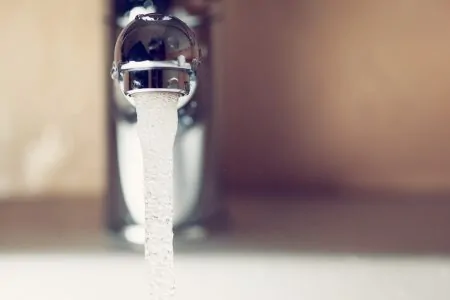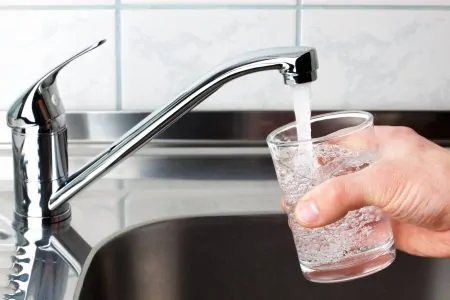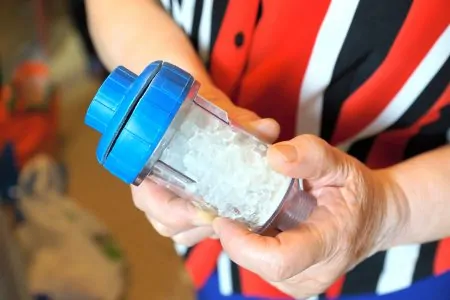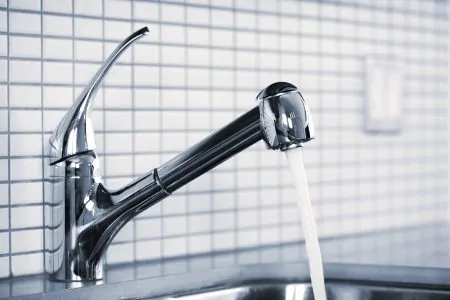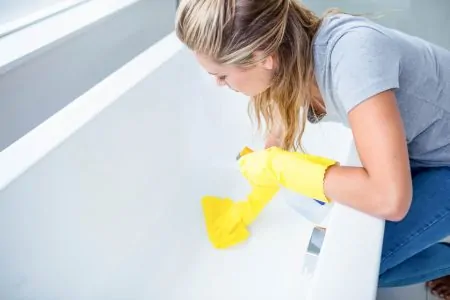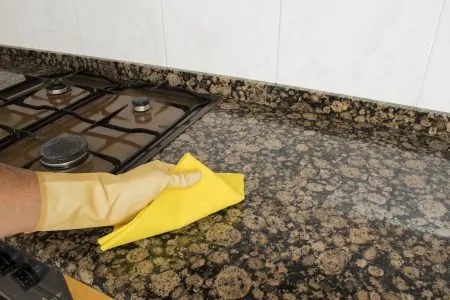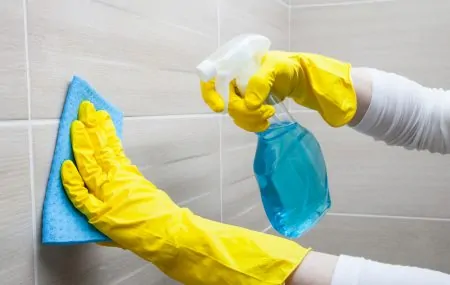The mineral content of hard water has proven health benefits but it can also damage your home’s plumbing and appliances. As mineral deposits accumulate and harden into scale, they can narrow your pipes, reducing water flow and potentially blocking it entirely.
If you have noticed that your faucets aren’t flowing as freely or laundry isn’t being cleaned as effectively, hard water could be responsible (1). If you have tested your water and found that it has high mineral content, there are multiple ways to soften it.
In this article, we will explore how to soften hard water using six techniques, including both salt and salt-free systems. These will help you protect your plumbing and keep your appliances working as they should.
Key Takeaways
- Ion Exchange: Most effective method to soften entire home’s water supply by replacing hardness ions with salt ions.
- Salt-free systems: Conditioners, like TAC and NAC systems, alter minerals’ forms to reduce limescale and improve water quality while keeping beneficial minerals.
- Magnetic softeners: Change the magnetic field of carbonates to reduce buildup, but may not be as effective as ion-exchange softeners.
- Reverse Osmosis System: Filters out harmful contaminants and hardness ions for soft, contaminant-free water without adding salt, but only for specific outlets.
How to Know if You Have Hard Water
The majority of people living in the United States have a moderate to very hard water supply. The states with the hardest water include Florida, Utah, and California. As water enters the ground, it flows through mineral-rich soil and rock. It collects calcium and magnesium carbonates, which makes it hard water (2).
When this water flows through pipes and into our homes, the mineral content can create limescale and other deposits. You might have noticed white spots or marks around water fixtures or on your dishes. These are dried mineral deposits left by the water — they aren’t dangerous, although they can be unsightly.
There are a few other signs that you might have hard water:
- Reduced water flow: Mineral buildup in the spout and pipes can narrow them, causing reduced water flow.
- Higher energy bills: As your appliances are forced to work harder due to limescale, your energy bills could be higher (3).
- Dry hair and skin: Very hard water can leave your hair dry and difficult to style. It can also affect your skin — you might notice mineral deposits on your body after a shower (4).
- Soap is less effective: Minerals can affect soap and shampoo significantly, reducing suds and lathering, and creating soap scum that is difficult to wash off (5). Your laundry could lose color and not be cleaned as effectively because the minerals prevent water and detergent from foaming (6).
- Test your water: You can easily test your water to see if it is hard. Fill a bottle halfway with water and add three squirts of dish soap. Shake it well and inspect the foam; if it dissolves quickly, your water is hard.
How to Soften Hard Water
The key to softening water is removing its mineral content, such as calcium and magnesium. There are several effective methods to make hard water softer, including traditional methods such as boiling. However, your options will depend on whether you want to treat all the water that enters your home or only specific outlets.
Some homeowners worry about softening their water due to higher sodium content. Extra sodium can be dangerous for people on a low or no-sodium diet due to potentially causing elevated blood pressure (7). There are ways to avoid these issues, but take this into account before deciding to make your water less hard.
1. Ion Exchange
Ion exchange is the most effective method to soften an entire home’s water supply. These systems generally feature two tanks:
- Resin tank
- Brine tank
Some systems feature dual tanks. This will reduce downtime when the system regenerates by having an additional resin tank available.
Resin Tank
This is where the hard water enters the system. The water is greeted by tiny salt-covered resin beads. As water surrounds these beads, hardness ions (magnesium and calcium) are exchanged for salt ions, usually potassium or sodium ions (8). The salt ions and hardness ions trade places, which is where ion-exchange filters get their name.
Keep In Mind
As the system treats larger volumes of water, the beads become saturated with hardness ions — also known as being “exhausted”. When this happens, the beads in the brine tank need to be recharged.
Brine Tank
Recharging is essentially softening in reverse. The salt trades places with hardness ions and minerals are flushed out of a wastewater drain. This is achieved by adding bags of salt to the brine tank.
There are three types of water softener salt you can add:
- Rock salt: This is the cheapest kind but it contains more insoluble materials, which can cause a buildup inside the tank and valves, requiring more frequent cleaning.
- Evaporated salt: Evaporated salt is finer and entirely purified. An example of this type is table salt.
- Solar salt: Solar salt is extracted from a brine pond, which is warmed by the sun. As the water evaporates, it leaves behind purified salt crystals.
Which Salt is Best?
- Low use: If your system only produces small amounts of soft water, buildups are less likely. In this case, rock salt is a fine budget-friendly option.
- Frequent use: If your system generates a large amount of soft water, eventual buildups are more likely. In this case, solar or evaporated salt are better options.
- Overall best option: Solar and evaporated salts are the most effective options for ion-exchange systems. However, rock salt can still be useful, depending on how much you use your water softener.
2. Demand Initiated Regeneration System
A Demand Initiated Regeneration system is one of the most common water softener types. These can measure water usage and regenerate only when necessary (10). Some of these systems are operated by a timer that can be scheduled for specific hours.
One downside of some of these systems is that they can leave you without sufficient water during high-demand periods. They also aren’t particularly eco-friendly — as the ions are exchanged, very salty brine is discharged into the sewer system.
3. Template Assisted Crystallization (TAC) or Nucleation Assisted Crystallization (NAC)
TAC and NAC systems turn hard water soft without using salt, making them healthier options than ion exchange. The other question is whether they are more or less effective (11).
Take Note
TAC and NAC systems don’t remove minerals from your water. Instead, they alter the minerals’ forms so they can’t stick to surfaces, preventing the issues that are caused by hard water.
When water runs through a TAC medium, the mineral hardness is converted into a crystal that is unable to adhere to any surface (12). This means that when testing the water hardness before and after treatment, you will receive the same results. However, the water will no longer cause limescale or mineral buildup, so it won’t be a problem.
One of the many benefits of TAC and NAC systems is the continued presence of beneficial minerals such as calcium, magnesium, and iron in your water. With an ion-exchange system, these are replaced by salts — which means an increase in sodium and potentially negative side effects (13).
If you want to be more environmentally friendly, a TAC system is your best option, especially because they don’t require energy and don’t waste water.
The main drawback of TAC and NAC systems is that the hardness will still be present. You should see brighter laundry and fewer stains on surfaces, but the results won’t match those of salt exchangers.
4. Chelation Systems
A chelation system is another salt-free water conditioner similar to a TAC. With these systems, the mineral ions adhere to a chelating agent such as nitriloacetic acid (14). This causes the minerals to be suspended in the water, which makes this system a descaler, rather than a softener.
These systems won’t reduce hard minerals but will prevent them from being deposited as scale. This results in a reduced buildup of limescale and minerals, preventing most of the issues associated with hard water.
The main benefit of this type is that it leaves healthy minerals, such as calcium, in your water but still prevents scale. If you are on a low-sodium diet, a salt-free system is the safest option. Even if any limescale or buildup does occur, it will be much easier to remove as the hard ions can’t stick to any surfaces.
However, like TAC and NAC systems, chelation is less effective than ion exchange if you want to remove hardness from water as it only softens minerals (15). Whether or not these systems are right for you will depend on what you want from your water.
5. Magnetic or Electronic Water Softener
One of the newest water softening systems is a magnetic or electronic softener or descaler. These devices are plugged into an electrical outlet and attached to an indoor pipe where the water enters the building.
They work by creating magnetic fields that alter the electromagnetic properties of the minerals. This causes the carbonates to repel each other and the pipes, reducing the formation of scale and buildup.
However, these devices have received much criticism. Studies have found that these softeners made almost no difference to water compared to ion-exchange softeners (16).
Still, unlike ion-exchange systems, these devices aren’t intended to remove hardness ions. They simply change the electromagnetic properties of the calcium and magnesium carbonate so they won’t cause buildup.
You can find these softeners on Amazon, such as this model from Eddy. However, we recommend caution when investing in an electronic water softener. Some customers were very pleased with the results, while others noticed no difference.
6. Reverse Osmosis System
A reverse osmosis system forces water through multiple fine filters. This removes harmful contaminants such as chemicals and organic materials — but it will also filter out calcium and magnesium ions (17).
Reverse osmosis systems are an excellent option if you want soft, contaminant-free water without adding salt. However, RO systems will only provide water to one outlet or appliance, so you might need to install multiple devices. The iSpring system is a popular choice — it is an under-sink filter that connects directly to a faucet.
The main drawback of reverse osmosis systems is that they increase water usage. They also require regular cleaning to ensure the water stays clear from contaminants — a dirty filter can be worse than no filter!
Keep In Mind
7. Showerhead Filter
If you have noticed the side effects of hard minerals, such as dry skin, after taking a shower, a showerhead filter will help. They are attached directly to the shower and will filter contaminants and minerals as the water leaves the faucet.
A showerhead filter limits limescale by removing minerals, which can otherwise clog the nozzles and impede water flow. You should also feel cleaner as soap scum won’t be formed — a relatively small investment could reward you with healthier hair and skin.
Quick Comparison
Now that we have explored some of the ways you can soften your water, you might be feeling slightly overwhelmed. Here is a quick comparison of the different system types:
- Salt-based: Ion-exchange systems are the most popular, most effective water softeners. They consist of two tanks: one filled with resin beads and tap water, and the other with brine. They replace hardness ions (magnesium and calcium) with salt ions (sodium or potassium). You can recharge the system by adding salt to the brine tank.
- Dual-tank: Standard ion-exchange systems require several hours to recharge after you add salt. This means your household might be left without softened water for some time. New systems often have two resin tanks, so you can still soften water while the other tank recharges.
- Salt-free: These are technically conditioners rather than softeners, and include TAC, NAC, and chelation systems. They won’t remove calcium or magnesium, but they alter their forms so they won’t adhere to surfaces. These devices are effective at reducing limescale and improving water quality while retaining the health benefits of the mineral content.
- Magnetic softeners: These softeners are divisive, with some reviews praising them and others claiming they make no difference. They work by creating a magnetic field that changes the magnetic field of the carbonates, repelling them from each other and the pipes.
How to Combat Hard Water Effects in Appliances
Appliances such as water heaters and dishwashers require a significant amount of water to work effectively. However, if limescale or minerals build up in pipes and narrow them, the volume of water that enters the machines is significantly reduced. This forces the appliance to work harder, resulting in increased energy consumption and a higher chance of damage to the system.
Luckily, there are ways you can combat these adverse effects:
- Water heaters: Water heaters are particularly vulnerable to mineral buildup due to the high temperature inside the tank and pipes. The best way to protect your heater is to install a water softener to remove all minerals before the water reaches the unit.
- Washing machines and dishwashers: Setting washing machines and dishwashers to a lower temperature can reduce mineral buildup. Insoluble carbons are left behind as the water is heated and evaporated (19). A lower temperature can reduce this effect. You can also use a non-precipitating water conditioner for your laundry. These will trap minerals during the wash, preventing them from binding to your clothes and machine.
- Coffee makers and kettles: The most effective way to avoid scale in your coffee maker or kettle is by using bottled water rather than tap, as bottled water isn’t classified as hard.
